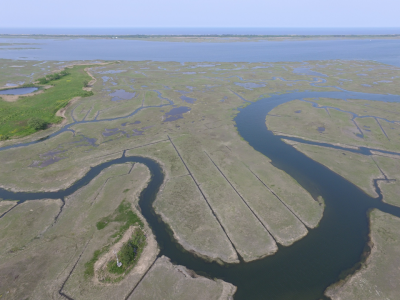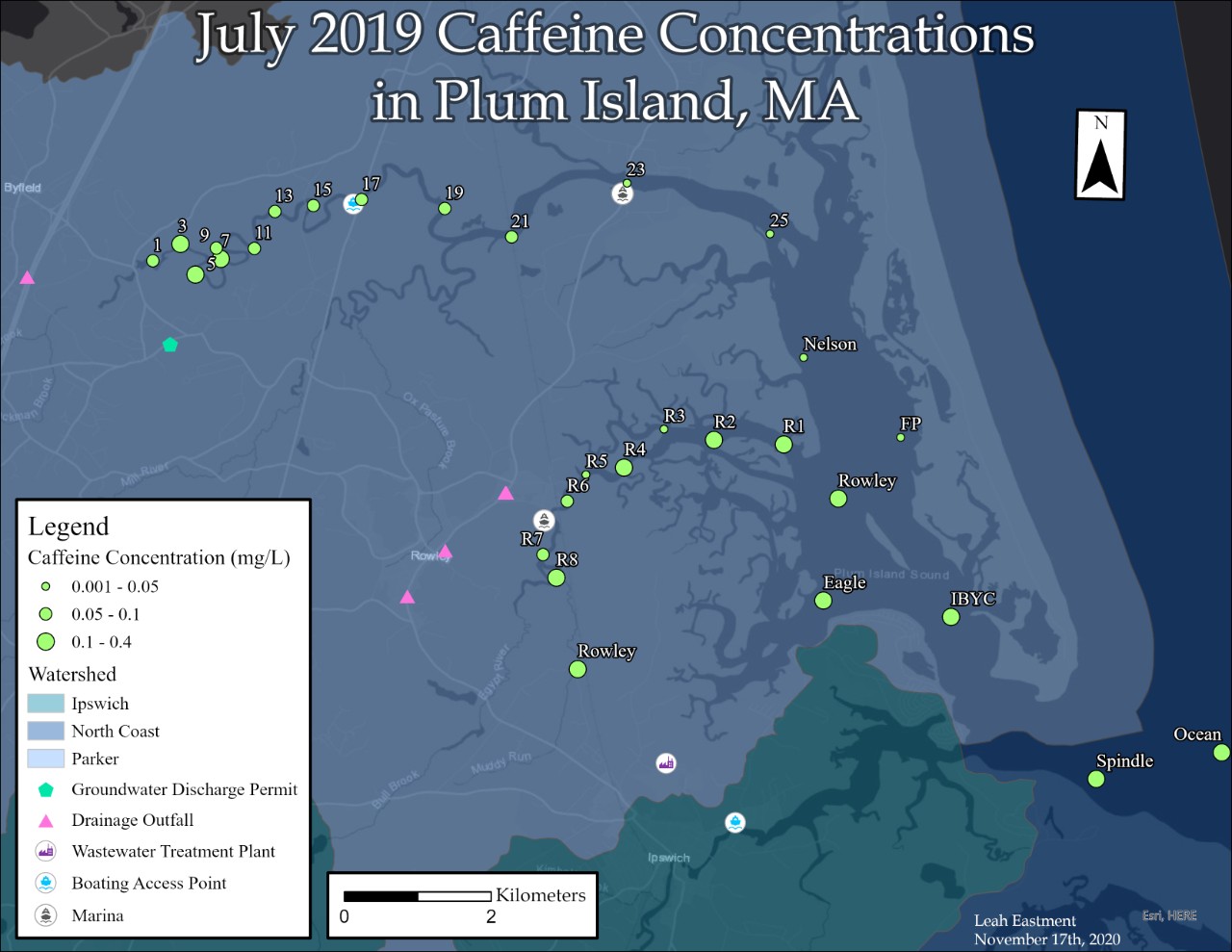Villanova Student Researches How Caffeine is Entering Our Ecosystem – and What We Can Do About It

Plum Island Sound in Massachusetts. Courtsey of Nathaniel Weston.
Caffeine is found in products we consume every day, from coffee and tea to chocolate, energy drinks and supplements to name a few. But that extra boost of caffeine to start our day or to stay more alert can have some negative impacts on our environment.
In 2019, Villanova University student Leah Eastment, ’21, College of Liberal Arts and Sciences, took water samples from the Parker and Rowley Rivers at the Plum Island Ecosystems Long-Term Ecological Research (LTER) site in Massachusetts to measure levels of caffeine. But why caffeine?
“Caffeine is a predominantly human-consumed compound, found in drinks, food and medication,” says Eastment, who is an environmental science and geography double major, with a minor in sustainability. “Finding caffeine in these samples indicates untreated or partially treated human waste. There aren’t a lot of studies that look at the direct impacts of caffeine on the ecosystem. It could impact the primary producers in the area. The worst-case scenario would be that it causes a food-web collapse.”
Nathaniel Weston, PhD, associate professor and chair of the department of Geography and the Environment, oversees the Environmental Science Research Laboratory on campus and has been conducting research since 1996 at the Plum Island LTER, which is funded by the National Science Foundation. He is currently one of the principal investigators at the site.
“The general question we’ve been asking is how is this coastal system reacting to land-use change and climate change?” says Weston. “Some of what our research is focused on is understanding the links between land-use change and coastal processes and impacts on the coastal system. We’ve previously looked at pollutants coming into the watershed from natural and human sources. Since caffeine only comes from humans, it was a new avenue for us and using it was a direct measurement of human waste into the system.”

GIS map of caffeine concentration levels. Created by Leah Eastment.
When Eastment ran the samples back at Villanova, she found caffeine levels varied from 0.001 parts per million (ppm) to 1.2 ppm. Caffeine can be very harmful at 5 PPM. Eastment found the highest levels of caffeine concentrations near sources such as marinas, boating access points, wastewater treatment plants, drainage outfalls and groundwater discharge permits. She created a Geographic Information System (GIS) map to indicate the highest levels of caffeine to these sources. From samples that were collected by Weston in summer 2020 during the COVID-19 pandemic, they found much higher levels of caffeine that could have been linked to boats, particularly house boats.
“The area is primarily serviced by septic tanks,” noted Eastment. “Proper maintenance is imperative and is something that the area should be aware of. For wastewater treatment, perhaps they shift from primary to secondary treatment, which would help decrease caffeine amounts.”
Eastment has been a member of Weston’s lab since 2017. She collected these samples as part of an independent research project in 2019. It will also serve as her senior thesis and Eastment has presented her findings at the LTER All Scientists Meeting.
“I’m really passionate about aquatic ecosystem health, especially emerging contaminants, and I wanted to do something that hadn’t been done before in the lab,” Eastment says. “Caffeine is an emerging contaminant that people need to do more research on because its effects are largely unknown.”
